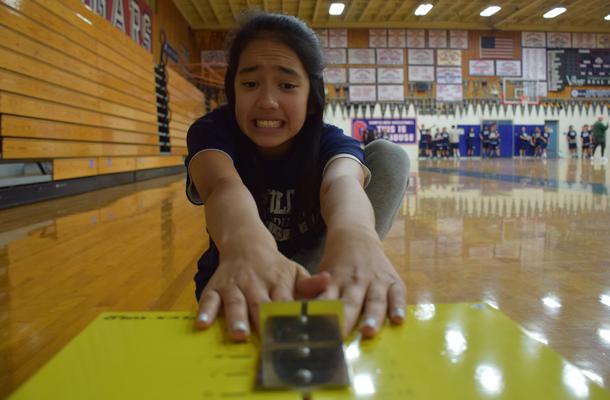Frosh Fitness Test Flawed
March 28, 2017
The California Fitnessgram, a “fitness” assessment for K-through-9 students, should be benched.
Not only do the various activities that comprise the test fail to accurately assess students’ fitness, but they also discriminate against students’ by passing or failing them based on their body proportions.
I’m not ranting here because I can’t pass the test –I can. But there are plenty of students, just as active as me, who can’t.
The Fitnessgram, which debuted in 1996, consists of 6 areas of assessment: Aerobic Capacity, Abdominal Strength and Endurance, Upper Body Strength and Endurance, Body Composition, Trunk Extensor Strength and Flexibility, and Flexibility.
Within most areas, there are options to test students’ fitness. The Campolindo PE department uses the One-Mile Run, Curl-Up, Push-Up, Body Mass Index, Trunk Lift, and Back-Saver Sit and Reach to cover the 6 areas. If students pass five of the 6 tests, they can either participate in independent PE (2 seasons of an after-school sport), or take 1 year of a PE elective.
Those unable to pass at least 5 of the exams must take an additional year of physical education as a sophomore.
Unfortunately, the current method of fitness assessment excludes a wide range of athletic ability. Fitness is relative to the athletic endeavor, and some students, who may be extremely capable in a particular sport, whether it is tennis, golf, cycling or kickboxing, will not necessarily satisfy the standards across all of the test areas.
For example, an elite runner, one who is setting school records, might still be unable to meet the push-up standard. A varsity football player may be unable to meet the flexibility standard.
The Sit and Reach involves a slider that rests on a box, and students must push the slider a certain number of inches while in a sitting position, showing their “flexibility.”
In addition, a test like the Sit and Reach gives an advantage to certain body proportions; The test favors those who have long arms relative to their leg length.
More problematic is California Department of Education’s use of the Body Mass Index for determining “fitness.” BMI is, in itself, controversial. It has been blamed for the body image issues prevalent among many American demographic groups. It is also a weak indicator of athletic prowess. There are Olympic athletes that would not pass the BMI test intended to determine the fitness of a 9th grader.
The Fitnessgram is simply too flawed to be an accurate indicator of fitness. To use it as the sole determining factor in whether or not a student must complete an entire year of PE during his or her sophomore year is a travesty.



